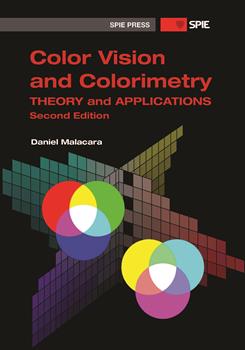|
The measurement of color is a very important issue with applications in many types of industrial activities, mainly in the textile, paper, leather, and graphic arts industries. The subject of color measurement is so important that many articles (Kippman, 1993), books (Grum and Bartleson, 1980; Pearson, 1980; Berger- Schunn, 1994), and standards are devoted to this topic. 8.2 Visual Chromatic Defects Color deficiency was first studied by John Dalton (Hunt et al., 1995) in 1798, because Dalton himself was color-blind; in fact, color deficiency problems are sometimes known as Daltonism. His studies were based solely on color naming and subjective descriptions by different observers. After Dalton, color vision deficiencies were investigated by John William Strutt Rayleigh, who developed a precise color-matching test, still known as the Rayleigh Matching Test (Thomas and Mollon, 2004), which was the basis for an instrument called the anomaloscope. In this test, a yellow light must be matched with a mixture of red and green light. By measuring the matching proportions of red and green, it is possible to detect different types of red-green color deficiencies. Following Rayleigh, color defects have been studied with more detail by many other researchers (Pitt, 1944). An excellent review of color deficiencies is in a chapter by Sharpe et al. (1999). The names for the different manifestations of color defects are formed by the Greek roots protos (first), deutan (second), and tritan (third), for the order in which they were discovered. Trichromats are those people with normal color vision, i.e., they have three normal color receptors. Anomalous trichromats also have three color receptors, but one of them is deficient. A person can be protanomalous, deuteranomalous, or tritanomalous if the L-, M-, or S-cones are defective, respectively. This defect may be caused by a shift from the normal spectral sensitivity of the L- or M-cones. These spectral shifts can be produced by hybrid LM- or ML-pigments that may appear due to genetic inheritance. Anomalous trichromats are more common than dichromats. |
|
|


